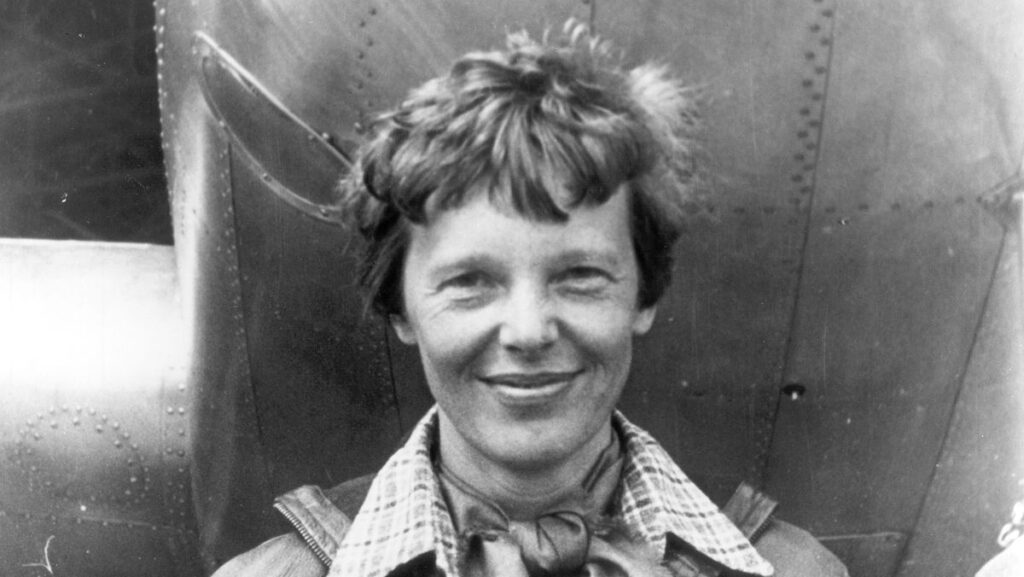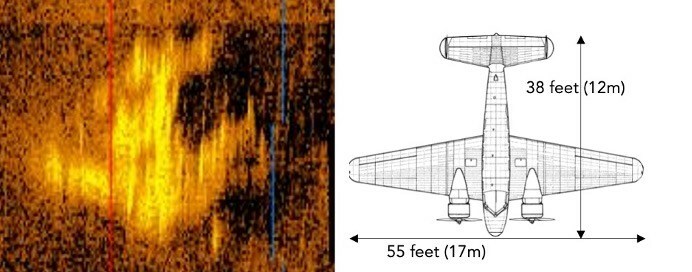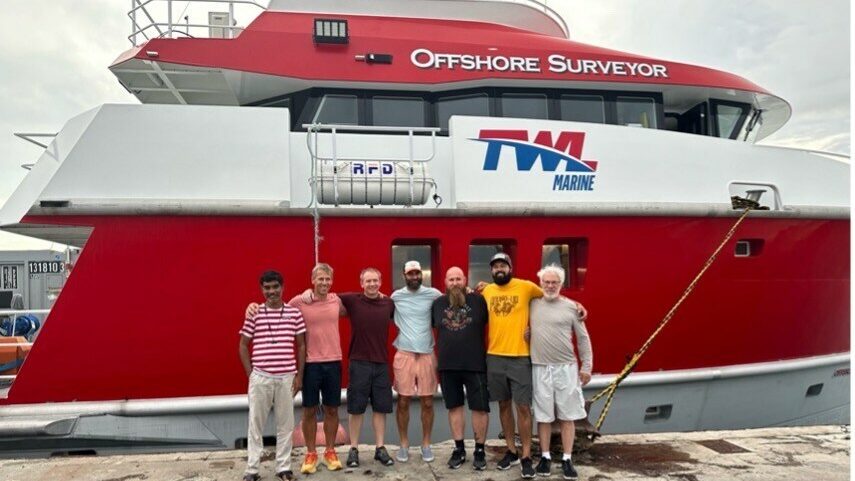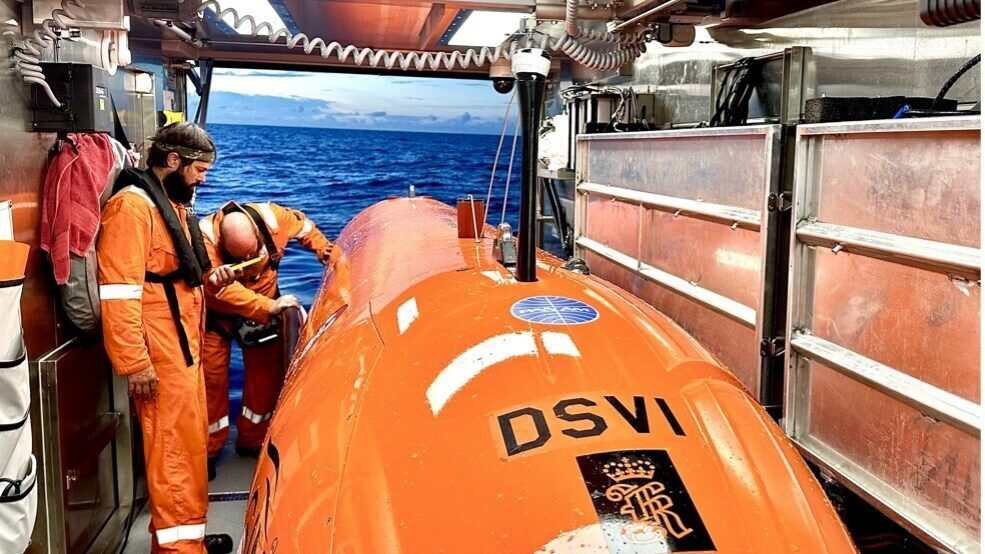
Amelia Earhart’s plane ‘found’ in Pacific after $11m search
After an extensive deep-water search, a group of underwater archaeologists and marine robotics experts at US marine robotics company Deep Sea Vision (DSV) have unveiled a sonar image that may explain the disappearance of American aviator Amelia Earhart.
Earhart, along with her navigator, Fred Noonan, disappeared on 2 July 1937 while attempting to circumnavigate the globe in a Lockheed 10-E Electra. The pair vanished without a trace, leading to one of the largest ever search and rescue missions by the US Navy and Coastguard.
Captured westward of Earhart’s projected landing point, in a swath of the Pacific untouched by known wrecks, a new sonar image reveals contours that mirror the dual tails and scale of her aircraft.

Earhart beneath the nose of her Lockheed Model 10-E Electra, March 1937, in Oakland, California, before departing on her final round-the-world attempt prior to her disappearance.
Charleston, South Carolina-based DSV is led by CEO Tony Romeo, who has been pursuing the missing aircraft using the “Date Line theory” of her disappearance nearly 87 years ago. The search is estimated to have cost $11m to date.
Originally theorised in 2010 by Liz Smith, a former NASA employee and amateur pilot, the Date Line theory attributes Earhart’s disappearance to Noonan forgetting to turn the calendar back one day as she flew over the International Date Line. Smith suggested that Noonan miscalculated his celestial star navigation by forgetting to turn back the date from 3 July to 2 July as they flew across the Date Line, creating a westward navigational error of 60 miles.
As a private pilot, DSV’s CEO Tony Romeo and his brother Lloyd Romeo believed the idea had merit and began digging deeper. The Romeos came to believe that after 17 hours of exhausting flying, it was quite plausible that Noonan could have made such an error. However, the theory and area described by Smith had never been searched by imaging technology – until now.
“This has been a story that’s always intrigued me, and all the things in my life kind of collided at the right moment,” Romeo tells Business Insider. “I was getting out of real estate and looking for a new project, so even though I really started about 18 months ago, this was something I’ve been thinking and researching for a long time.”

Sonar image side by side with Earhart’s Electra at scale
For now, the sonar image is not detailed enough for experts to draw any definitive conclusions. However, Romeo says he was not surprised to find the apparently intact nature of the aircraft in the images.
“We always felt that she [Earhart] would have made every attempt to land the aircraft gently on the water, and the aircraft signature that we see in the sonar image suggests that may be the case,” he says.
“We’re thrilled to have made this discovery at the tail end of our expedition, and we plan to bring closure to a great American story.”
Departing in September last year, the DSV team searched across 5,200 square miles of the Pacific Ocean floor, more than all previous searches combined. Their tool, the HUGIN 6000, is an autonomous underwater vehicle (AUV) that can reach full ocean depth. During the mission, DSV modified the equipment’s side scan sonar to search nearly 1,600-metre-wide swaths instead of the normal 450 metres.
Around 90 days into the mission, the team were analysing images taken 60 days prior when they noted the anomaly that could potentially be Earhart’s plane.
The images were taken roughly 100 miles from Howland Island in the Pacific, which is the area experts think it is most likely the plane went down. The object captured in the images sits around 5km below the ocean surface.
However, at this point, it was too late to return to the site for a closer look. In addition, the camera on the AUV had broken, meaning a return trip would have been pointless.
However, Romeo hopes to revisit the area in the future.
“This is maybe the most exciting thing I’ll ever do in my life,” he tells the Wall Street Journal. “I feel like a 10-year-old going on a treasure hunt.”

Deep Sea Vision team
Each dive of the sonar equipment lasted nearly two days and collected several terabytes of data scanning the sea floor. The 16-strong international crew worked around the clock in shifts, analysing the imagery using cutting-edge software that was being written as the mission went along.
Earhart’s fate has been the source of speculation and conspiracy theories since her mysterious disappearance in 1937. She remains a defining icon of her generation, women’s rights and a pioneering spirit of early aviation.
DSV says it believes the team is one step away from closure to this great mystery and will be keeping all other information, including the exact location, strictly confidential.
Romeo says that, while he is very optimistic about their find, there was a great deal of internal debate about whether to release the sonar image publicly. Many prominent authorities have been working to validate DSV’s findings, including Dorothy Cochrane, Aeronautics Curator at the Smithsonian’s National Air and Space Museum, who states: “We are intrigued with DSV’s initial imagery and believe it merits another expedition in the continuing search for Amelia Earhart’s aircraft near Howland Island.”
“It definitely appears to be an aircraft of some sort,” David Jourdan, who has searched three times for Earhart’s missing plane and is the co-founder and president of the ocean exploration company Nauticos, tells the Post and Courier. “It has aircraft-like features. But sound is funny. It can mislead you. We can’t say it’s her plane until you put a camera on it.”
Drawing firm conclusions will require further research — potentially capturing detailed images that could identify the plane’s registration number or gathering clearer dimensions of the anomaly to match them against the known dimensions of the plane.

Deep water sonar – nicknamed Miss Millie – on the surface preparing for launch. Each autonomous dive lasts approximately 36 hours.
“It really requires further research,” Cochrane tells Smithsonian. “Finding something that’s really worth investigating further is step one. Verifying it’s the actual craft is step two. And step three becomes: Is it possible to recover this or not, or should it just be left where it is?”
Unlocking the mystery of Earhart’s whereabouts is one of several projects for Romeo and Deep Sea Vision. DSV says it has already concluded a yet-to-be-announced project in the Pacific and is currently providing its technology for a longer-term project in Australia.
Images courtesy of Deep Sea Vision/PRNewsfoto
The post Amelia Earhart’s plane ‘found’ in Pacific after $11m search appeared first on Marine Industry News.
